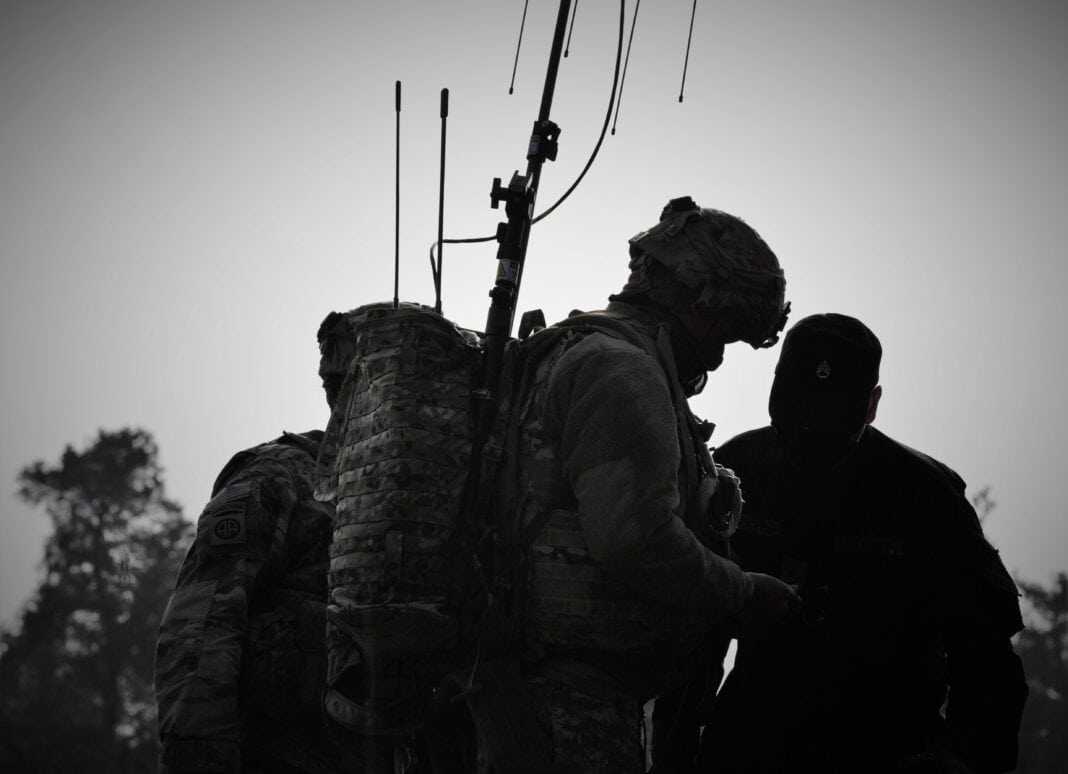Warfare is constantly evolving, with new technologies shifting the operational capabilities of forces from the imagined to the real. In the era of computing, this has manifested itself in the development of Electronic Warfare (EW). EW is an often neglected aspect of warfare due to its technical nature. Whereas the average person can rapidly understand the employment of conventional ground, naval, or air forces, EW capabilities defy simple explanation. All conflicts since the adoption of the radio include EW. Future conflicts will undoubtedly involve EW in an increasingly important role as the weapons of war increase in sophistication and networking. Therefore, it is important to define what exactly EW entails and how it has been used in the past.
1.0: Defining Electronic Warfare
Simply put, electronic warfare involves using the electromagnetic spectrum to aid in combat operations (source). As BAE systems puts it, “[d]elivering that critical edge to support the mission is what electronic warfare (EW) is about” (source). It is but one aspect of a modern military operation, though an important one. In the modern battlefield, EW is a force multiplier. Force multipliers are support components that enhance the mission capabilities of a given unit (source).
“The purpose of EW is to deny the opponent the advantage of, and ensure friendly unimpeded access to the electromagnetic spectrum.”
NATO
EW, therefore, combines the whole suite of offensive, defensive and support aspects. These will each be explored. It is important to understand that these capabilities are complementary. Radar jamming, a facet of electronic attack, can also fulfil an electronic protection role. Similarly, vehicles kitted for electronic warfare are not aligned with one aspect of EW. Typically, they can conduct the whole triad of operations.
2.0: Electronic Support
Electronic support (ES) is the assistant part of electronic warfare. ES is “concerned with [the] detection, direction finding, locating, interception, identification, recording and analysis of radar and communications signals” (source). This includes radar, sonar, direction-finding radio equipment, IFF, and more. If you can see a target first, you can shoot first. If you shoot first, you have a better chance of eliminating the threat (source). Better yet, through the recognition of enemy strong and weak points, units can be guided to do maximum damage with minimal loss to friendly forces. In NATO terminology, these are referred to as Electronic Support Measures (ESM).
2.1: Case Study /// Operation Iraqi Freedom
During Operation Iraqi Freedom, Y Troop of the Royal Marines used electronic warfare to great effect. Y Troop is the premier signals intelligence (sigint) frontline unit of the unit. For the 2003 invasion, it deployed with 40 Commando and the Queen’s Royal Dragoons (source). Using intercepted communications, Y troop enabled these units to bypass Fedayeen ambushes set along the thrust towards Basra (source). Furthermore, Y Troop tracked key Ba’athist members within Basra (source). This enabled British forces to make precise thrusts to target these potential threats when securing the city.
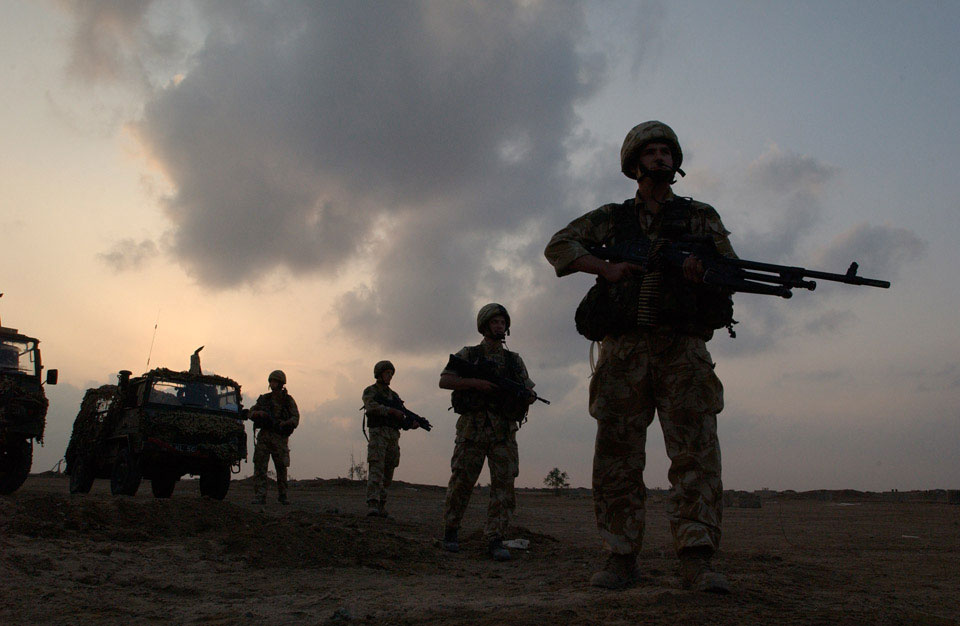
2.2: Case Study /// Operation Desert Storm
Coalition Airborne Early Warning and Control (AWACS) aircraft facilitated the successful air campaign against Iraq during Operation Desert Storm (source). AWACS were essential in guiding strikes onto target and identifying friends from foes (source). Desert Storm was remains the largest air campaign since World War II thanks to the ES provided by these AWACS controllers (source).
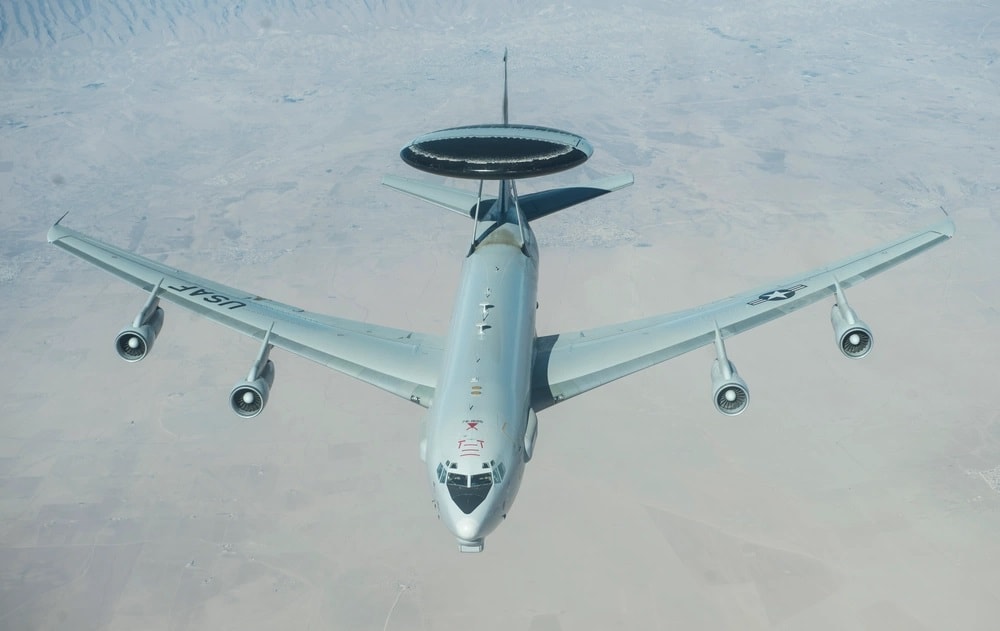
2.3: Case Study /// Falklands War
Failures in ES can be dangerous. In the Falklands War, the HMS Sheffield sank due to an Exocet missile strike (source). While capable of detecting such an attack, a cascading series of failures resulted in the strike going unnoticed until it was too late (source). The transmission of another British vessel “blanked out” Sheffield’s radar, preventing the identification of the aircraft that launched the strike (source). A friendly vessel had, in fact, identified the Super Étendard carrying the missile, but Sheffield ignored the warning due to days of false alarms (source). As a result, the ship was on defensive watch, with half of the crew resting (source). The ultimate result of these failures to properly conduct ES was 20 crew dead, a further 26 wounded, and the first Royal Navy ship lost in combat since WWII (source).

3.0: Electronic Attack
Electronic attack (EA) intentionally uses the electromagnetic spectrum to disrupt the enemy (source). It is often used with the phrase “[d]isrupt, deny, degrade, destroy, or deceive“ (source). This can be on the frontline, in rear areas, or even aimed at infrastructure within their borders. It can involve the physical destruction of a target or merely degrade the utility of the electromagnetic spectrum for the enemy (source). Examples of the former include the air-to-ground HARM, or High-speed Anti-Radiation Missile, which locks onto emitting enemy radars. Examples of the latter include radar jammers, which blind or confuse enemy radar operations, hampering air-defence capabilities (source).
3.1: Case Study /// Desert Storm Air Campaign
Operation Desert Storm’s air campaign is a shining example of EA capabilities. Iraqi Integrated Air Defense System, IDAS, was one of the most technologically sophisticated in the world at the time of the onset of hostilities (source). The RAND corporation estimates Iraq held 16,000 Surface-to-Air (SAM) missiles (source). However, in the early hours of 17 January 1991, a daring raid by AH-64 Apache’s destroyed a radar installation supplying ES to four Iraqi air bases and Baghdad, negating this advantage (source). In the words of the commander of coalition forces, this “plucked out the eyes” of the Iraqi IDAS (source). In the first hour, Coalition forces destroyed the “heart” of Iraqi IDAS (source). Within 36, it was, for all intents and purposes, eliminated (source).
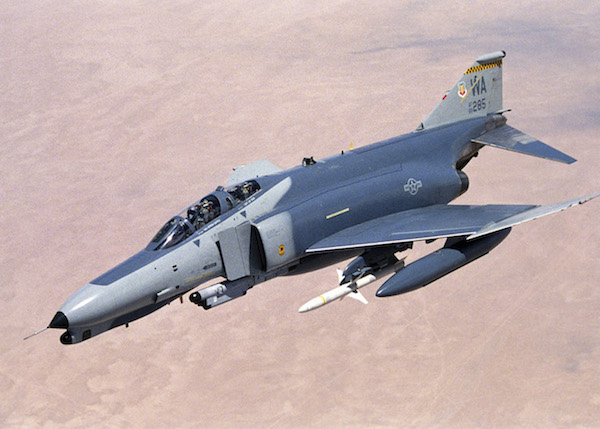
The following weeks would see AWACS jam enemy radar and communications and the Suppression and Destruction of Enemy Air Defenses, SEAD/DEAD, through Wild Weasel missions (source).
3.2: Case Study /// Desert Storm Ground Campaign
On the ground, SAS teams destroyed secure Iraqi fibre-optic cables (source). This forced the Iraqi army onto the airwaves, where traffic could be intercepted. Coalition forces played recordings of earlier radio traffic back at full power during the ground campaign (source). This deceived the Iraqis intercepting these communications into believing a force was moving elsewhere (source). Intelligence officers distributed false orders, further confusing Iraqi units (source).
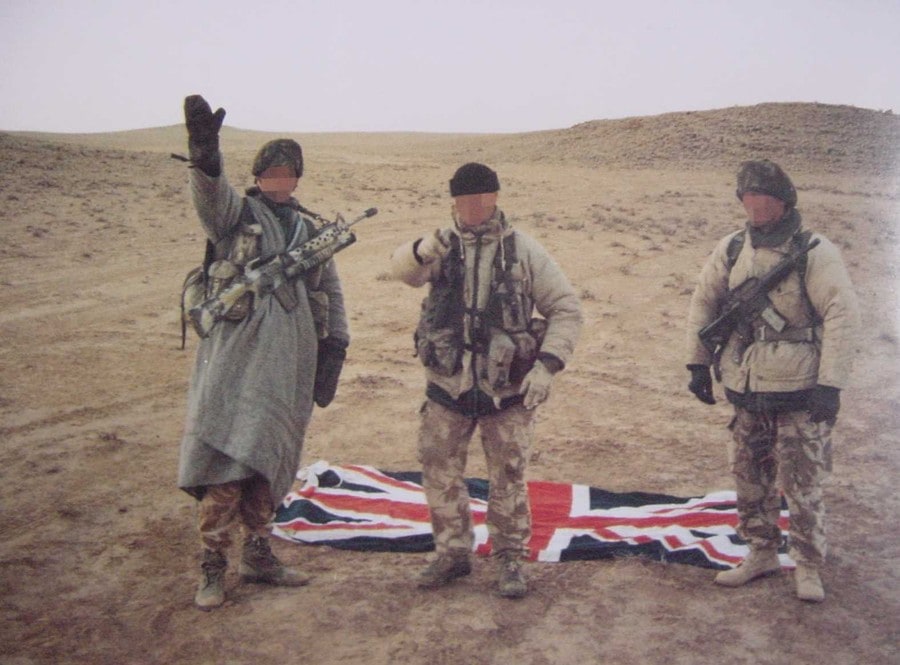
The result of the Gulf War was a stunning coalition victory. Commentators often refer to it as the first “information war” where EW moved “decisively from a supporting role to a combat role” (source).
4.0: Electronic Protection
The counter to EA is electronic protection (EP). EP, as the name implies, entails the protection of friendly capabilities to utilise the electromagnetic spectrum (source). This includes EA from both friend and foe (source). If applied correctly, EP is difficult to identify. It would mean business as usual, including the conduct of EA and ES. Given the reliance on this for communication, data transfer, and targeting, EP has been a focal point of military efforts to modernise electronic warfare capabilities (source). Given the vast host of potential EA targets, technologies and procedures are not always universally protective. Encryption works well in preventing enemy interception of radio communications but wouldn’t work when applied to radar jamming. Decoys are instrumental in preventing anti-radiation or infrared missile strikes but would not be applicable if the enemy is jamming communications or radar. EP is, therefore, more specialised than other schools of electronic warfare.
4.1: Case Study /// Opening Hours of the Russo-Ukrainian War
The Russian invasion of Ukraine in February 2022 infamously opened with a widely publicised assault on Hostomel airfield, just 10km northwest of Kyiv (source). Russian EA prevented Ukraine’s air defences around the capital from shooting down approaching helicopters, allowing VDV formations to land at and hold the airport for several hours (source). Moreover, the degradation of this network allowed Russian aircraft to strike deep into Ukraine, striking over 100 targets, including long-range radar installations, bases, and munitions storage sites (source). This constitutes a serious lack of EP from Ukrainian forces, who had already faced Russian EW capabilities during the 2014 invasion of Crimea (source).
4.2: Case Study /// Russo-Ukrainian War
However, as the drive to Kyiv faltered, Russian EA could no longer deprive Ukrainian forces of the use of the electromagnetic spectrum without doing the same to their frontline units (source). RUSI, the Royal United Services Institute, describes this as “electronic fratricide” (source). Russian forces could not communicate effectively, worsening an already chaotic situation. The lack of preparation — units were only told of their missions 24 hours before d-day — meant that forces along the same axis of attack did not have the time to trade encryption keys (source). The general degradation of radar to both sides allowed aircraft to make deep incursions into rear areas largely unmolested (source). Just a week into the conflict, Russian EA largely ceased (source).
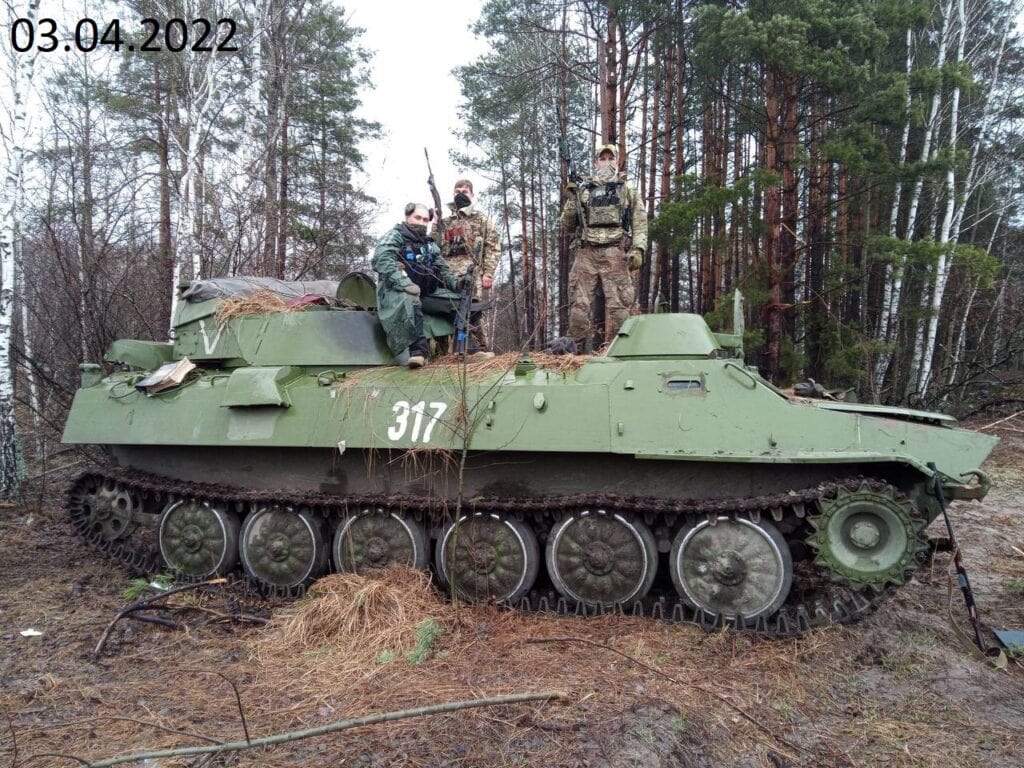
The war is still ongoing. However, it is clear that the cessation of EA is the result of poor Russian EP. Aircraft hug the terrain to reduce the possibility of a radar lock from SAMs (source). The use of military purpose-built and commercial drones, easily jammed when EW functions as intended, continues at precipitous rates (source). Russia’s lack of encrypted radios means Ukrainian forces could intercept communications and strike headquarters at will (source).
5.0: Summary
Electronic warfare is integral to any modern conflict. The ability to degrade the coordination and retaliation of your enemy has always been a topic of immense interest to military thinkers. EW is the most modern aspect of this desire, and grants unprecedented capabilities to forces that are able to conduct it well. Failure to do so will result in a bloody war of attrition, as seen currently in the Russo-Ukranian war.

